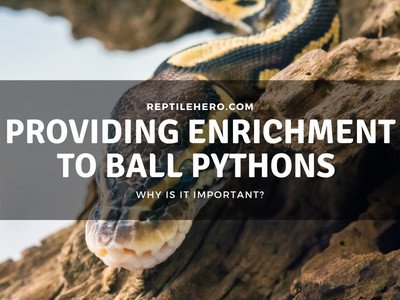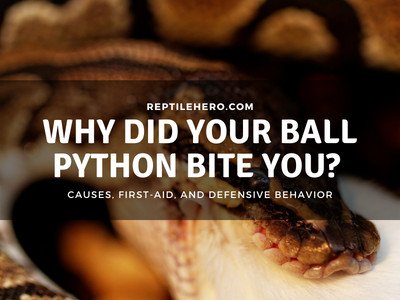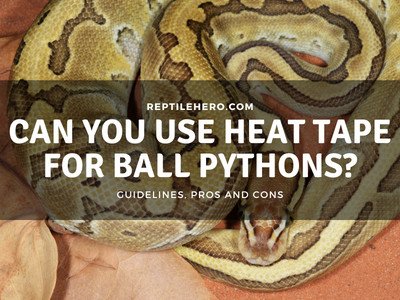Can You Use Coconut Fiber as a Ball Python Substrate?
Are you planning to use coconut fiber for your ball python’s enclosure substrate? Or maybe you’re looking for an alternative to the one you’re currently using. Providing the right substrate for your scaley friend is important so you can lessen possible risks.
Coconut fiber can be used as a substrate for ball pythons, especially for increasing humidity. However, it is recommended to use coco fiber mixed with other substrates, like cypress mulch, to minimize risks of ingestion and mold build-up.
Coconut fiber is commonly used for gardening but it can also be used as a pet substrate. What are the pros and cons of using coco fiber as a ball python substrate? What are the things to keep in mind when using one? Find out the answers as you read down below!
4 Reasons Why Coco Fiber is a Great Substrate for Ball Pythons
Coco fiber is a great substrate option for ball pythons because it is1) highly absorbent, 2) soft in texture, 3) reduces smell, and 4) inexpensive.
1. High Absorption
In general, coconut fiber has a high absorption so it can maintain moderately high humidity for long periods. For ball pythons, 60–70% is the ideal overall humidity level.
Coconuts are fibrous drupes which makes them hold humidity quite well as a substrate.
If you are having problems boosting the humidity in your ball python enclosure, then I suggest using a coconut fiber substrate.
Together with controlled ventilation, regular misting, and other factors, a coco fiber substrate can increase moisture in the enclosure.
>>Learn more about humidity maintenance in our article can you use foggers/misters for ball pythons
2. Soft Texture
Coconut fiber is a soft substrate that poses no immediate harm because it can’t scratch and injure ball pythons. They can also choose to burrow themselves in this substrate.
Even though ball pythons don’t make their burrows in the wild, they are known to sometimes dig and bury themselves under loose substrates like coco fiber. This can give them a bit of enrichment and make them feel more secure.

Being a soft and loose substrate also makes coco fiber easier to manipulate when you are scaping your ball python enclosure.
3. Smell Reduction
Using coconut fiber can reduce the unpleasant smell coming from a ball python’s poop, urate, and urine. Coconut substrate typically smells earthy, comparable to a forest’s scent.
Do your enclosures smell bad? If so, then I recommend switching to coconut-based substrates like coco fiber.
In addition to its neutral but earthy smell, coco fiber can also absorb a ball python’s liquid pee which greatly reduces the bad smell of the enclosure.
Personally, I have used coco fiber bricks before and it smells great, especially when it is newly hydrated.
However, this is not always the case as there are a couple of reports of certain brands of coco fiber brick smelling pungent or like sweat. So always check for reviews online before buying them in bulk!
4. Inexpensive
As a ball python substrate, coco fiber bricks cost around 20–30 dollars per kilo. Loose coco fibers are slightly more expensive but are still in the same price range.
Coco fiber substrates are great in value, especially those compressed or in bricks. A small 1 kg brick can expand to fill up to 10 liters which is approximately 4 times its compressed size!
This amount will be enough to fit a standard 4 x 2 x 2 ft enclosure. It could even last you 2–3 substrate changes depending on the depth. This means that for an adult ball python, you just need to spend 20–30 dollars every 4–6 months for a fresh substrate.
Pro Tip: For ball pythons, it is recommended to only use substrate made specifically for reptiles. There are many substrates for sale online that indicate gardening use which may contain chemical fertilizers that can be harmful to your ball python.
3 Possible Problems of Using Coco Fiber Substrate for Pythons
Using coconut fiber as a ball python substrate can present keepers with problems such as 1) substrate ingestion, 2) mold build-up, and 3) gnat infestation.
1. Substrate Ingestion
Coconut fiber substrates are loose which means they can accidentally be ingested by a ball python during feeding time. There are also instances where it can get stuck on the python’s heat pits and mouth.
The main issue with using fine substrates like coco fiber is getting it stuck on the ball python’s heat pits and mouth. They might not be able to remove this completely which can lead to possible infections and severe clogging.
So if you find coco fiber stuck in your ball python’s heat pits, I suggest helping it! You can use a soft brush to gently remove the coco fiber.
A ball python typically does not experience any serious problems when it accidentally consumes coco fiber while it’s feeding.
However, in large amounts, it can lead to impaction which can result in impacted poops. Severe cases may need surgical removal of the ingested coco fibers.
2. Mold Build-up
While retaining high humidity, the use of coco fiber substrates can result in mold growth because of the ball python’s wastes or unsanitized wood decors. Molds can be harmful to ball pythons as they can cause respiratory infections and scale rot.
If you see mold in your ball python enclosure, quickly remove it and replace the substrate immediately as it can spread pretty quickly.
To prevent mold growth keep in mind the following:
- Always disinfect tongs and other tools that can transfer mold from one enclosure to another
- Disinfect wood or other objects to be used by boiling and baking it to kill bacteria
- Spot-cleaning must immediately be done after a ball python poops and pees
- Make sure to prevent the substrate from becoming too damp and soggy
3. Gnat Infestation
Gnats breed and feed on the organic and decomposing matter in moist substrates like coconut fiber. The most common kind of gnat found in ball python enclosures is called a fungal gnat.
Gnats do not pose any harm to your snake, however, they prove to be an annoyance to us keepers.
Their larvae can damage certain plants like geraniums and begonias which might be the ones you currently have in your python’s enclosure if you have a bioactive setup.
Since pesticides and chemicals are big risks to ball pythons, the best way to get rid of gnats is to create a bait that can attract and trap them. Using fly traps and placing apple cider vinegar in a mason jar are some good ways to trap gnats.
3 Factors to Remember in Using Coco Fiber as a Ball Python Substrate
When using coconut fiber as a ball python substrate there are a couple of things to keep in mind, which are: 1) coco bricks rehydration, 2) substrate mixture and 3) spot-cleaning.
1. Coco Brick Rehydration
Coco fiber substrates can come in bricks which should be rehydrated following the indicated instructions. If there are no instructions, the general rule of thumb is to use 1 gallon of water per 1 kilo of coco brick.
Coco bricks need to be soaked for about 20–30 minutes before they can expand and get mixed up.
Pro Tip: You can use boiling water to kill harmful bacteria and pathogens in the compressed coco fiber. Coco bricks also rehydrate faster when boiling water is used.
If you want to have a dryer substrate you can lay it out under the sun for a day for it to fully dry out before adding it to your ball python’s enclosure.
2. Substrate Mixture
To lessen the problems related to using coconut fiber as substrate for ball pythons, mix it with other substrates like cypress mulch and sphagnum moss.
Mixing the fine coco fiber with other substrates can greatly lessen the chance of clogged heat pits and ingested substrate.
3. Spot-Cleaning
Spot-cleaning should be done when using coco fiber as a ball python substrate. By doing so, keepers can prevent mold and bacteria growth that can cause respiratory and scale infections.
Spot-clean your python’s coco fiber substrate by removing solid wastes and the substrate around them.
Check your scaley pets’ enclosures often and remove visible wastes and the substrate near them immediately.
Coco fiber substrates should be replaced completely after 2–3 months of use. If it becomes too damp and dirty, it should also be replaced immediately to avoid harmful bacterial build-up.
Further Questions
How can you make a coco fiber substrate for a ball python?
Coco fiber substrate is made by finely grinding coconut husks which is typically done using a custom-made machine. Coconut husks are gathered from old coconuts which are more fibrous than younger ones.
What is cocopeat and can it be used for ball pythons as well?
Cocopeat is another term for coco fiber substrate in the reptile-keeping community. It is the mixture of pure coconut fibers and grounded coconut husk which can also be used for ball pythons.
Is chemical fertilizer safe for ball pythons?
Most fertilizers, especially chemical ones, are not safe for ball pythons. So substrates that are made for reptiles are the only ones that should be used as enclosure bedding because potting or gardening soil can contain harmful substances for reptiles.
Summary of Using Coconut Fiber as a Ball Python Substrate
Coconut fiber substrates can be used for ball pythons and have advantages like high absorption, soft texture, smell reduction, and affordable price.
However, using coco fiber substrates also have risks like accidental ingestion of substrate and build-up of harmful molds and bacteria. Gnat infestations can also happen and can be troublesome for the owner.
When using coco fiber as a ball python substrate, the keeper should keep in mind how to rehydrate a coco brick, properly mix the substrate, and spot-clean for maintenance.
Sources
[1] https://iopscience.iop.org/article/10.1088/1742-6596/1153/1/012085/pdf
[2] https://www.maine.gov/dacf/php/gotpests/bugs/documents/fungus-gnats-utah.pdf







